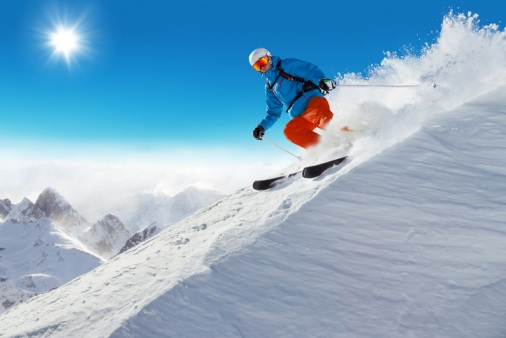Don’t be left out in the cold when it comes to winter sport cover

Authored by Aviva
With 1.5 million Brits set to head to the slopes, Aviva urges travellers to check policy documents and take out cover as soon as they bookWarning comes as medical bills can cost several thousandsA broken leg costs £7,500 on average, with The United States, Canada and Andorra being the top three most expensive countries for treatment during winter seasonDespite this, one in nine holidaymakers (11%) admit to never purchasing travel insurance
With 1.5 million Brits set to go on a winter sports holiday this year, Aviva data reveals the potential costly medical bills travellers could face in the event of an accident or injury abroad during winter season.
The top five most common winter sports claims are:
Most common injury
Average cost of medical treatment
1. Dislocation
£4,000
2. Rib fractures
£3,150
3. Fractured clavicle
£4,000
4. Broken leg
£7,500
5. Broken wrist
£4,000
Despite being popular with thrill seekers, winter sports such as skiing, snowboarding and snowmobiling carry a higher risk of injury. When looking at the most common winter sports claims, a broken leg ranks top as the most expensive injury to sustain, costing an average £7,500. This is almost double that of other common winter sports claims, including dislocation, fractured clavicles (collar bone) or broken wrists, which each cost an average of £4,000 each for treatment.
The top 10 most expensive countries to require treatment during winter sports season are:
Country
Average cost of medical treatment for winter sports injuries
1. The United States
£6,877
2. Canada
£5,797
3. Andorra
£2,894
4. Austria
£2,327
5. Switzerland
£1,768
6. Italy
£1,742
7. France
£1,118
8. Bulgaria
£1,095
9. Sweden
£871
10. Finland
£708
Costs also vary greatly from country to country, with Aviva data revealing that The United States is the most expensive country for treatment of winter sports injuries, with the average claim being £6,877.
Although the average claim during the winter sports season is £2,200, Aviva research shows that one in nine holidaymakers (11%) never purchase travel insurance. With the average planned spend on a winter sports holiday this year being £1,837, travellers could be risking being out of pocket by thousands of pounds in the event they need to cancel their holiday.
Kelly Whittington, Director of Travel claims at Aviva, comments: “Snowy sports holidays – and the après ski environment – can be great fun, but it can also be a little more dangerous than your standard beach holiday.
“This is why it’s really important to check your policy documents and make sure you have the right level of cover for where you’re going and the types of activities you have lined up. In some instances, you may need to take out ‘winter sports cover’ which provides additional protection against things like theft, piste closure and avalanche delay, on top of medical treatment.
“Travel insurance is designed to help customers in the case of an unforeseen emergency. This could either mean something that occurs on holiday – such as a bad fall or colliding with an object such as a tree – or an incident that happens beforehand which disrupts travel plans. Whilst we all hope the worst won’t happen, accidents or illnesses occur and medical expenses can be very costly, especially in some countries. If you’re unlucky enough to need hospital treatment or need to be flown home early, medical expenses can even run into the tens or hundreds of thousands. By taking out travel insurance as soon as you book your holiday, you’re protecting both yourself and your possessions, giving you peace of mind in the lead up to your trip.”
Aviva’s top tips for protecting yourself and your finances during winter sports season include:
Get the right gear: When your skis and boots match your height and weight you’re far less likely to fall and injure yourself. So, tempting as it might be to borrow kit from friends and family, you’re better off hiring ski equipment that suits you, once you arrive on holiday.Know your limits: Whether you’re on the bunny slope or a black advanced run, stick to the runs you can safely complete. It’s also worth checking your policy documents to ensure that you’re covered for the activities you have lined up too. Stay in touch: Try to make sure that at least one person in your group (or ideally, everyone) has a charged mobile phone on them. That way, if your group gets separated – or someone gets into trouble – you’ll be able to get help more easily.Take it easy with the après-ski: Ski resorts are a great place to unwind with friends and family – and après-ski bars (and alcohol) are a big part of the fun. But you don’t want to take unnecessary risks. Remember to take it easy if you’re planning on continuing skiing that day. And leave most of the mulled wine until you’re safely off the slopes. Not only is this dangerous, but if you were to have an accident on the slopes and were found to be under the influence, you could risk being unable to claim.Check your insurance cover: While most standard travel insurance policies will cover you for a range of activities, it doesn’t always provide cover for winter sports unless you purchase optional winter sports cover. This covers you for winter sports activities such as snowboarding and skiing, while also providing cover against things like damage to your equipment, piste closures, or if you can’t take part in the fun because you’re not well. Contact your insurer as soon as possible in the event you need to make a claim or have been asked to pay for treatment up-front. Your insurer should be able to organise and guarantee costs of medical care on your behalf where appropriate, so don’t jump into making any hasty decisions to avoid being out of pocket.





